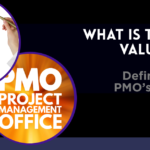Project management offices (PMOs) will look different depending on which sector they operate in. In terms of PMOs in manufacturing and services, there will be a fair amount of overlap, and plenty of differences, too.
That’s not to assume that there is one-size-fits-all PMO style dependant on industry. Every business will need a different PMO setup, but there are themes that crop up in similar industries and sectors.
Here, we’re going to look at:
- Commonalities between a services and manufacturing PMO
- Where manufacturing and services PMOs diverge in function
- Ways both sectors could learn from each other
To give you a grounding in what to expect in each type of business and help you move across sectors easily.
How are services and manufacturing PMOs the same?
No matter the industry a company operates in, there are some functions of a PMO that will be the same, or at least similar. What services and manufacturing PMOs have in common will be the same across PMOs in general.
The main function of a PMO is the ensure projects are delivered on time and on budget, whilst producing something useful to the business. There are also governance functions – a PMO needs to monitor projects within the business to ensure they follow best practices and meet regulatory and internal requirements.
One of the big challenges faced by both types of PMO is changing requirements. It’s estimated that 11.8 percent of money invested in a project is lost in the manufacturing sector, primarily due to changing project requirements. In a services industry like IT, losses are around 10.1 percent. Both are above the average of 9.8%. There’s a need for tighter control on outcomes for both sectors.
What are the differences between manufacturing and services PMOs?
There are lots of ways in which a PMO in a manufacturing business is different to a services business. It comes down to not only the way each business is set up, but also the people within it.
Management style
A services sector PMO is more likely to use the agile method of project management. There is a degree of flexibility within a services business since there aren’t long lead times to bringing in any kit that might be needed, for example. Project requirements as laid out by stakeholders are more likely to be fuzzy since there isn’t a tangible end product.
In a manufacturing industry PMO, there is likely to be an end product from a project. It may be a finished prototype or product, or taking delivery of a piece of factory equipment – there is more change a project is going to have something you can touch. With projects with a clear deliverable, waterfall project management will be more suited.
People skills
Within a manufacturing business, a PMO will need to work with skilled manual workers and engineers. This type of colleague will likely to be task-focussed and used to working towards a defined end result. Managing the human resources in a manufacturing PMO will benefit from someone who has knowledge of the roles of project team members.
PMOs in a services business will be working with people who are used to satisfying the requirements of customers. Working within tight frameworks and proscribes protocols can be more challenging for services-led employees. Having the human resources in a services PMO managed by someone with strong communication and people skills is more important than subject matter expertise.
Are there practices that services and manufacturing PMOs can learn from each other?
There is a common problem with higher than average project losses, as we noted a little earlier. These losses may be reduced by either PMO style assessing their method of operations and adapting.
- Technology is a challenge in the manufacturing sector, difficulties rolling out and training new systems. Adapting to agile project management for such projects and working with shifting requirements are elements of services PMOs that could be adopted.
- Targeted outcomes are usually clear in a manufacturing PMO, every project is likely to produce something so there is a set path to an outcome. Understanding what the end product will look like earlier on can help a services PMO stay on track.
The take home
Manufacturing and services PMO’s have many differences, in their outcomes and how to get there. This gives different management styles and the people on project teams need different styles of leadership. There are lessons that each can learn to improve their PMO outcomes.






